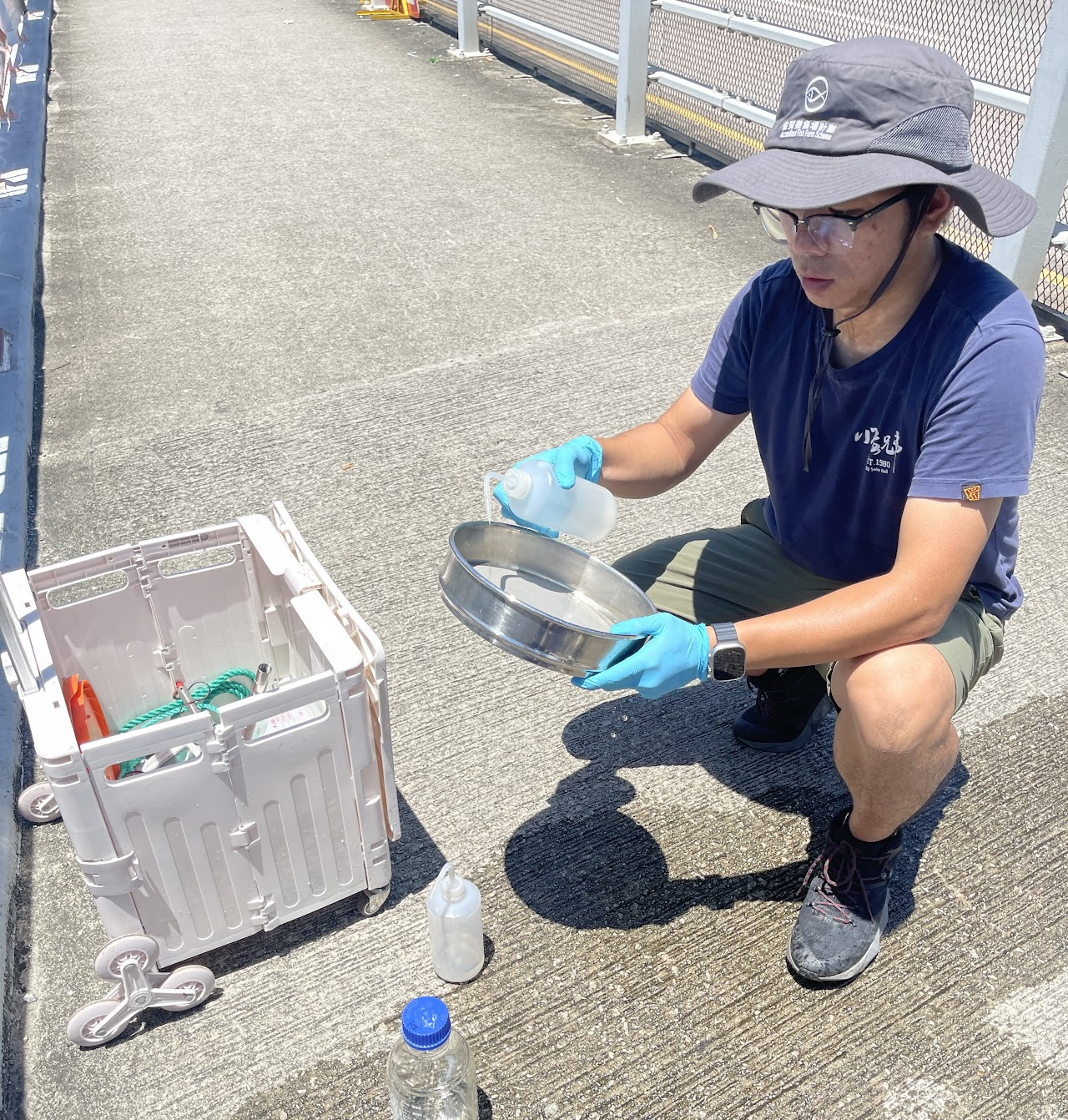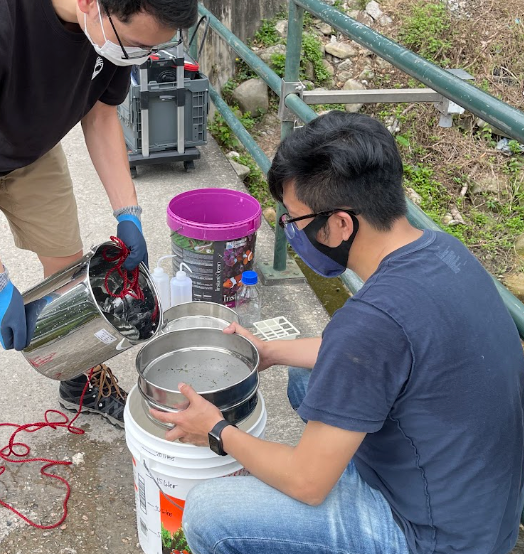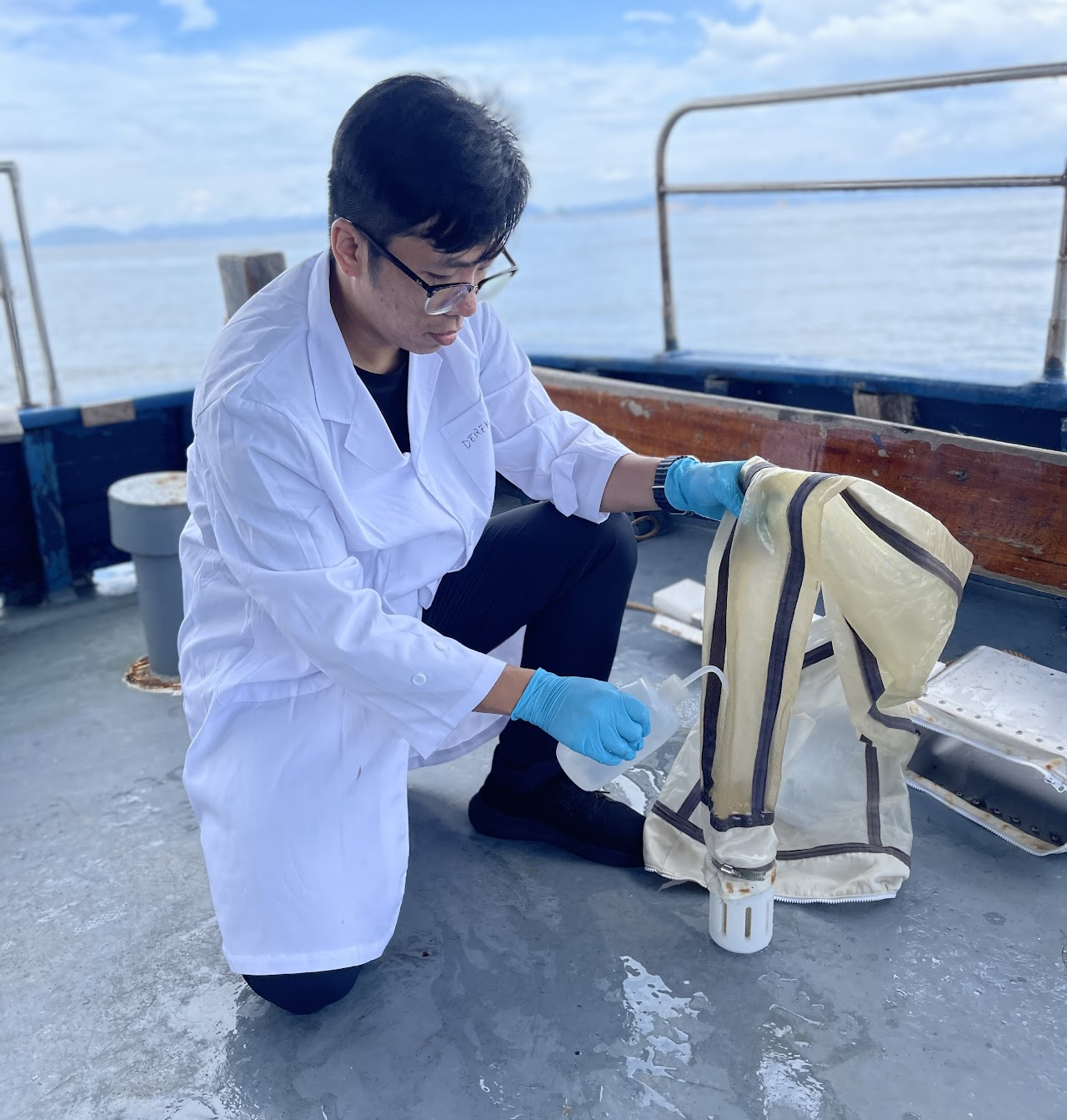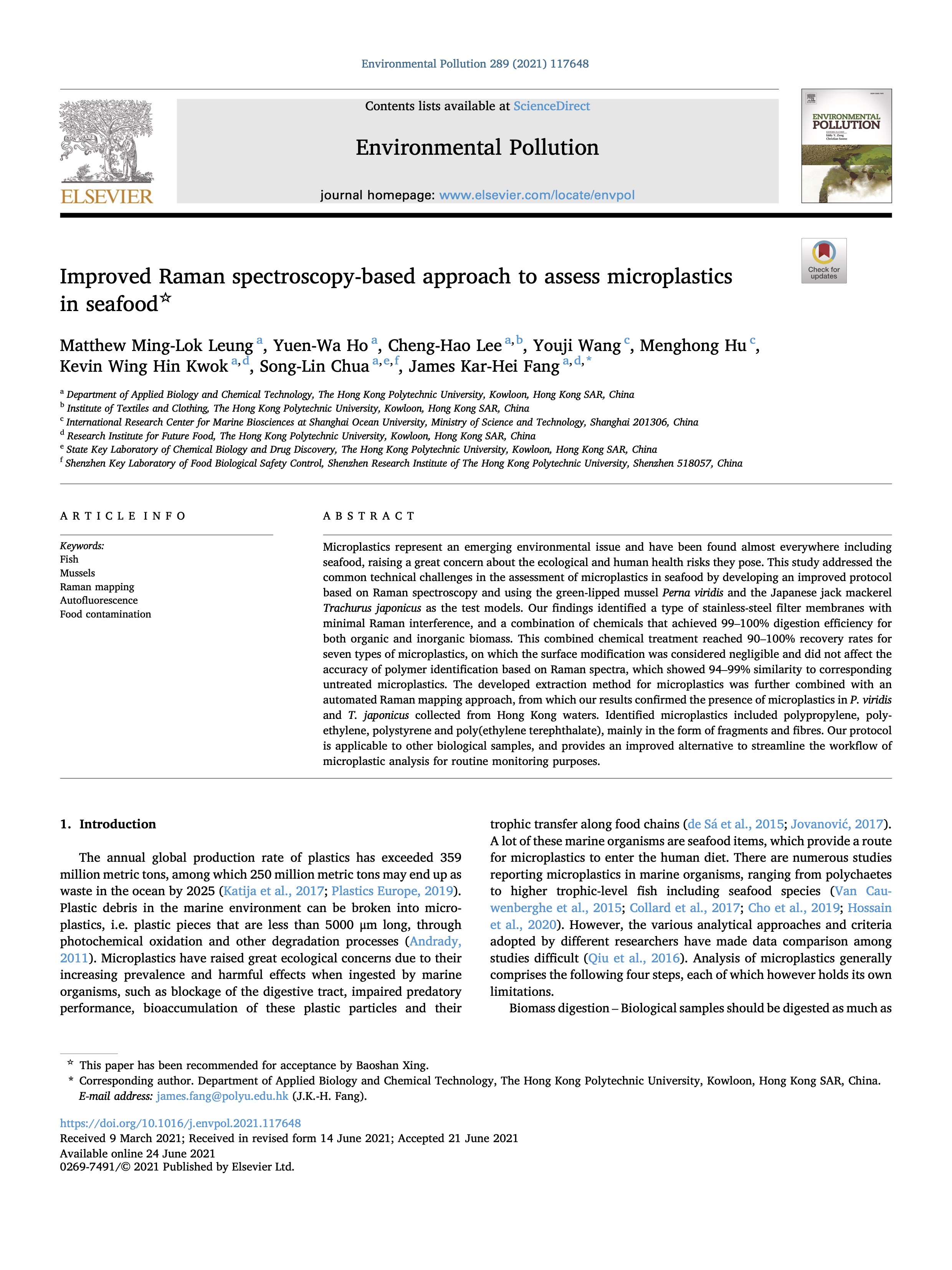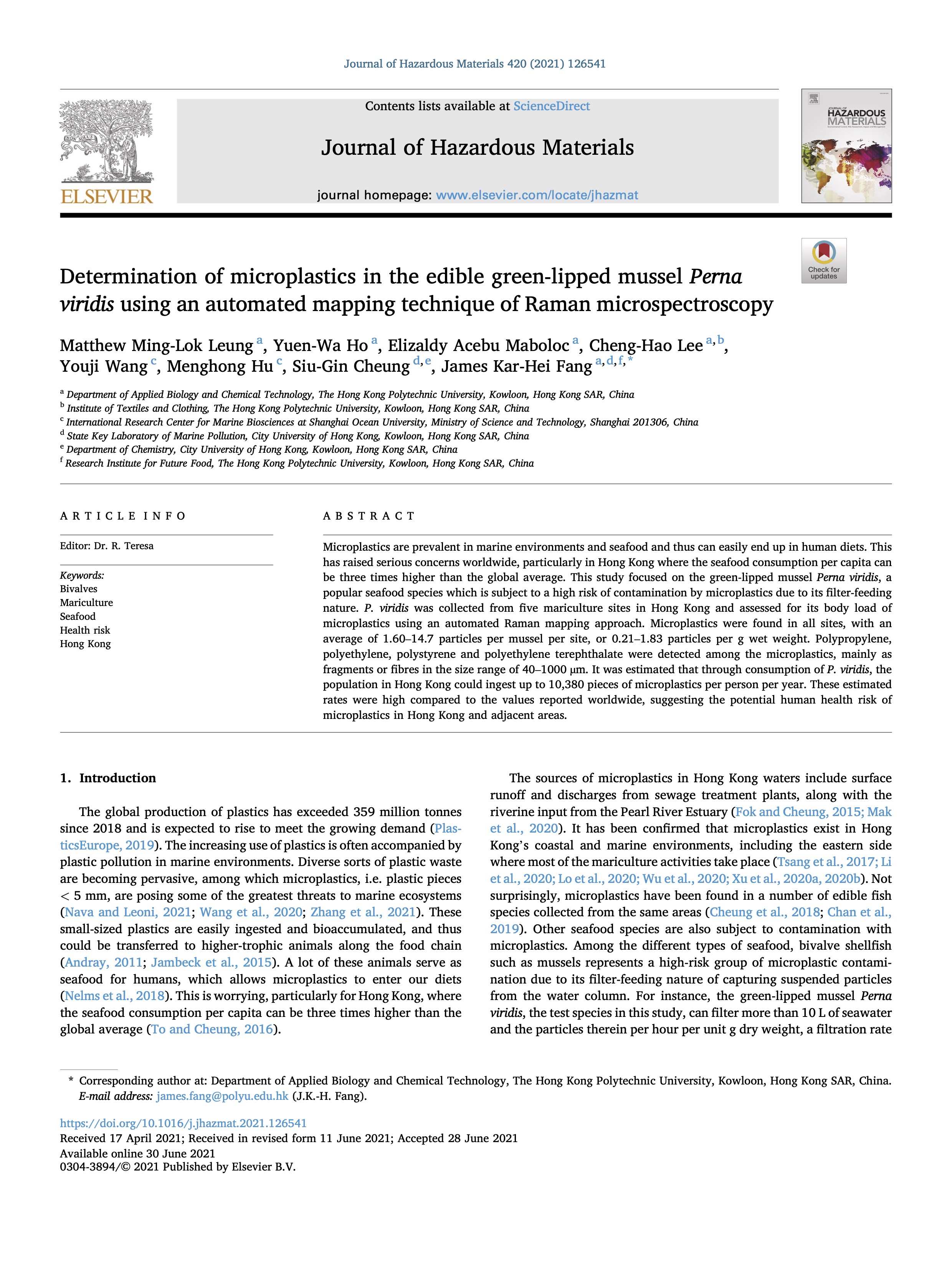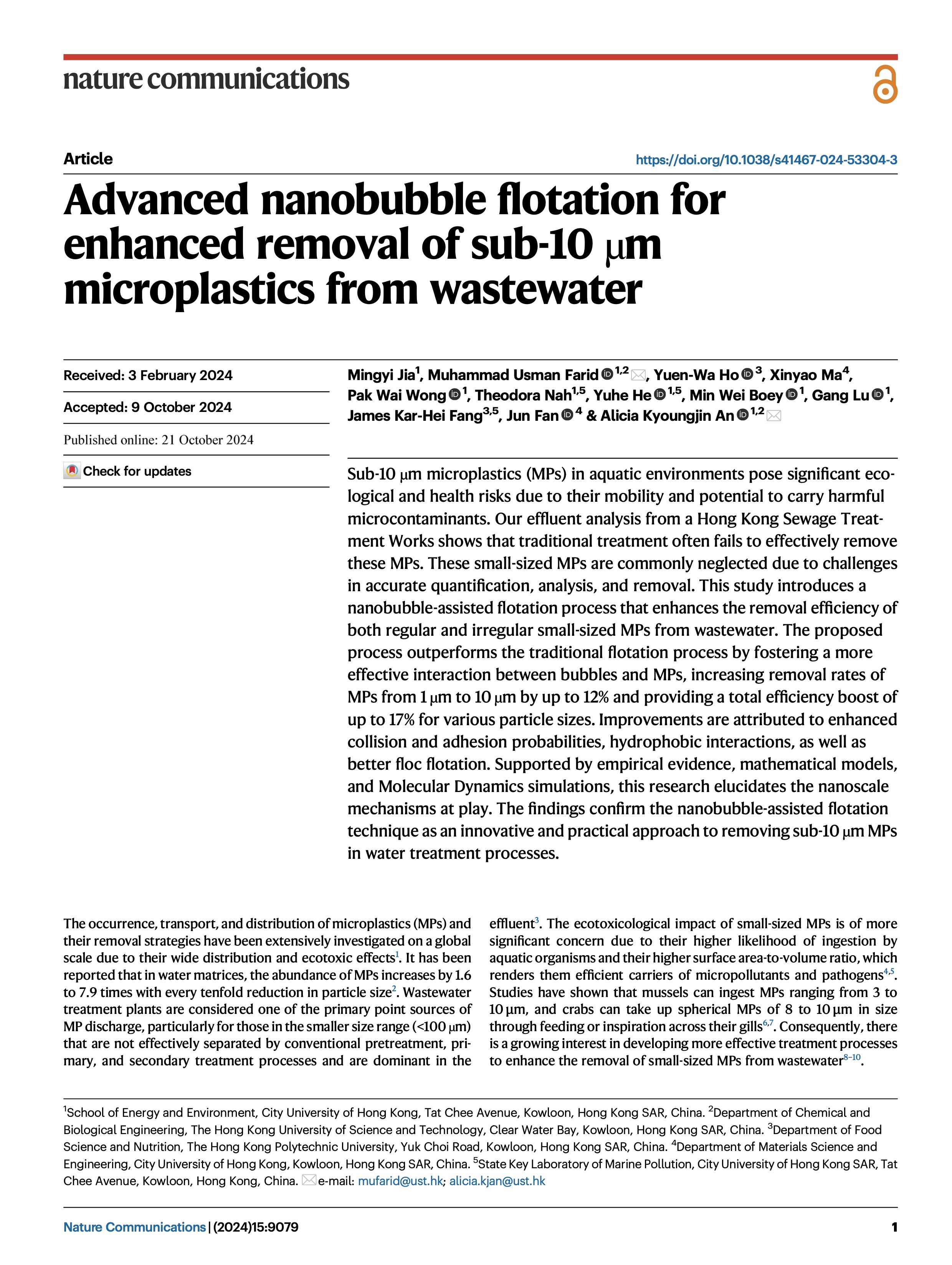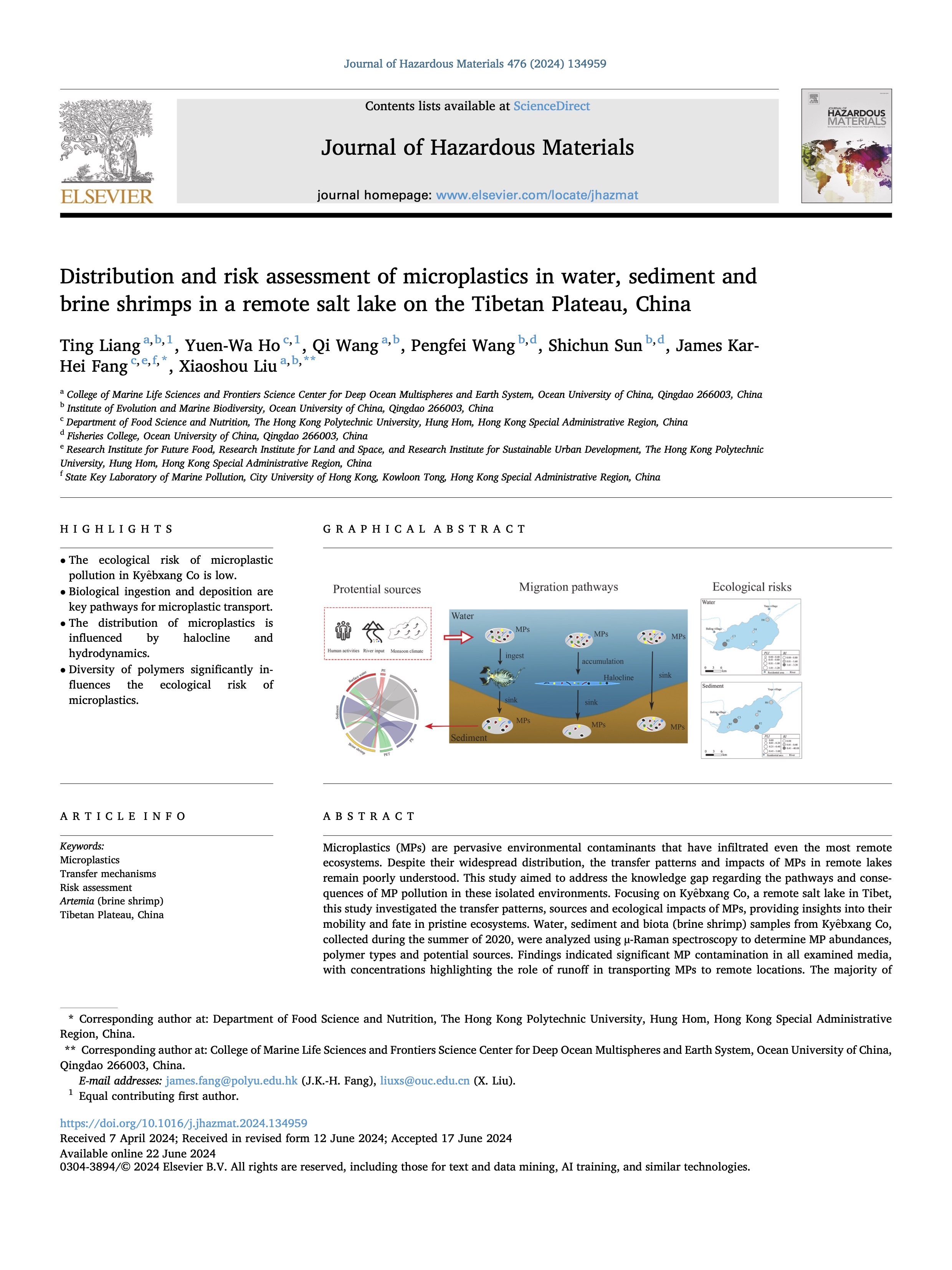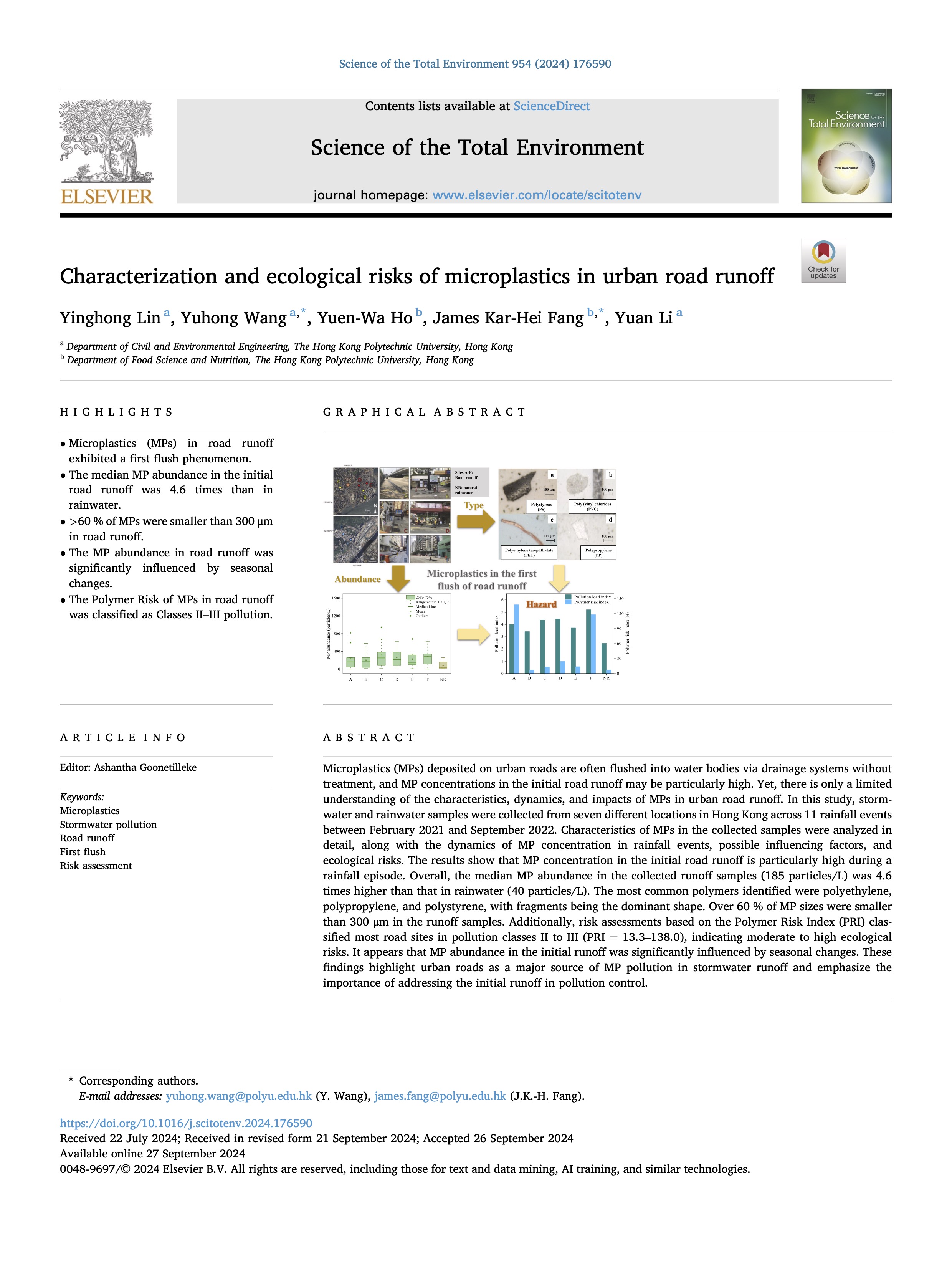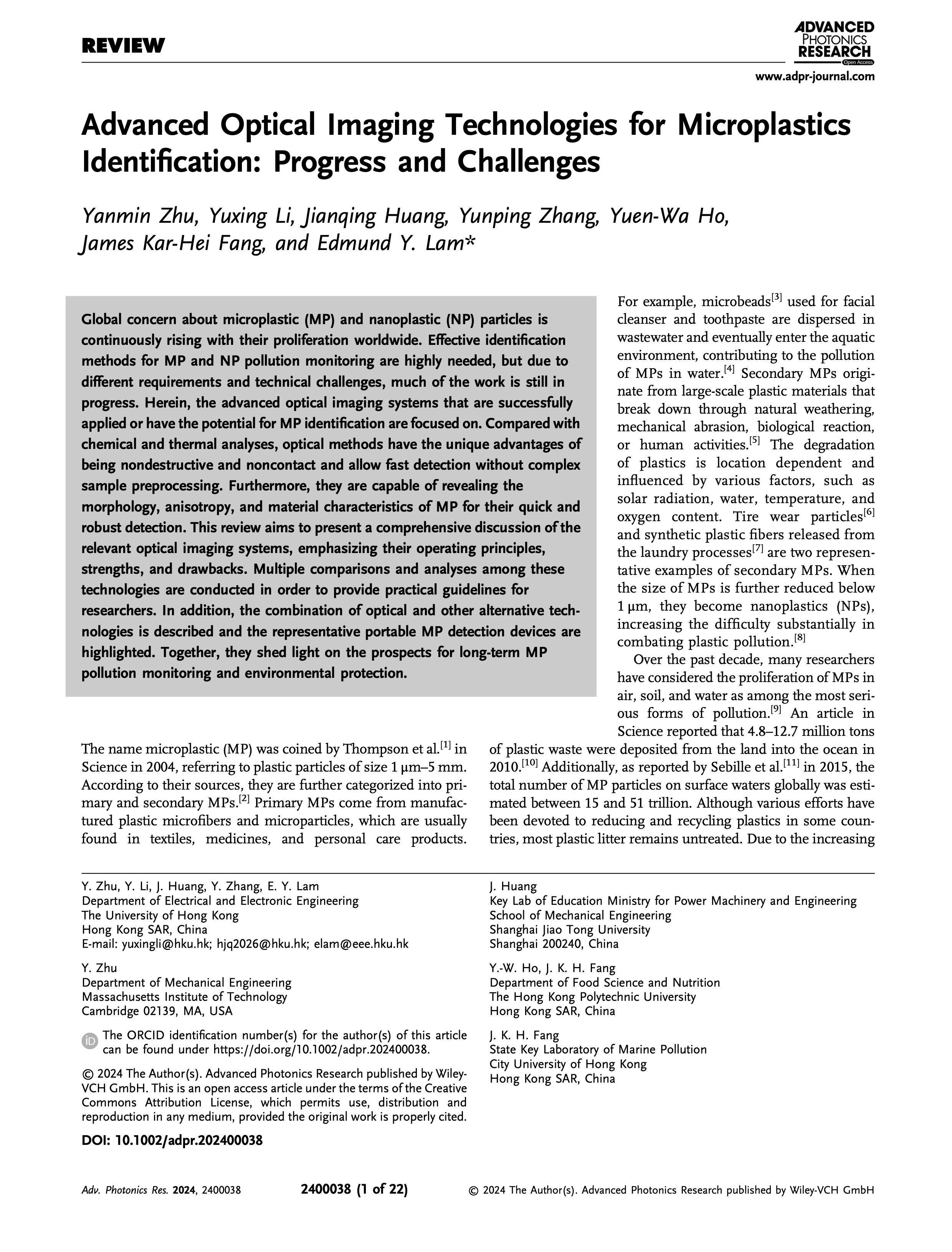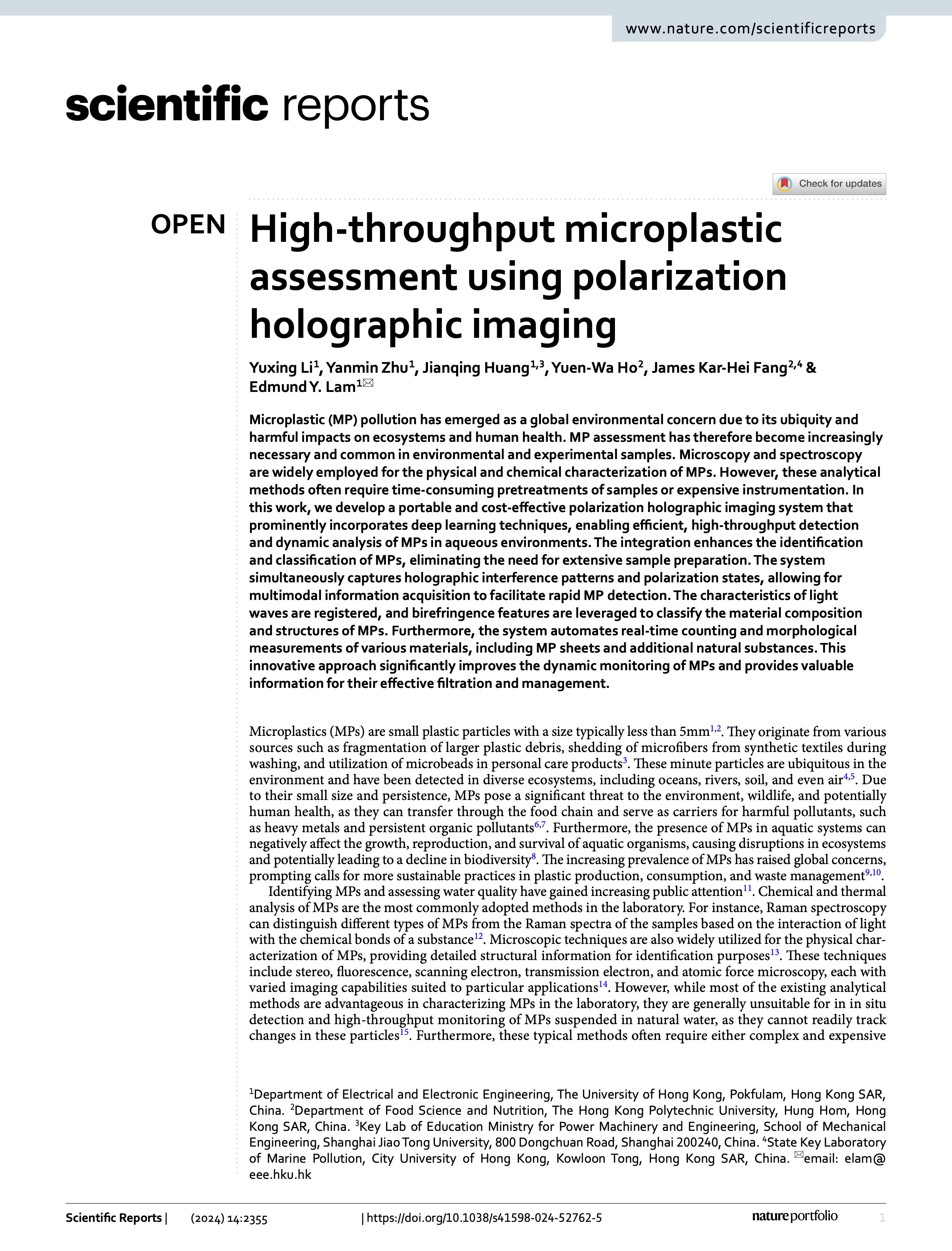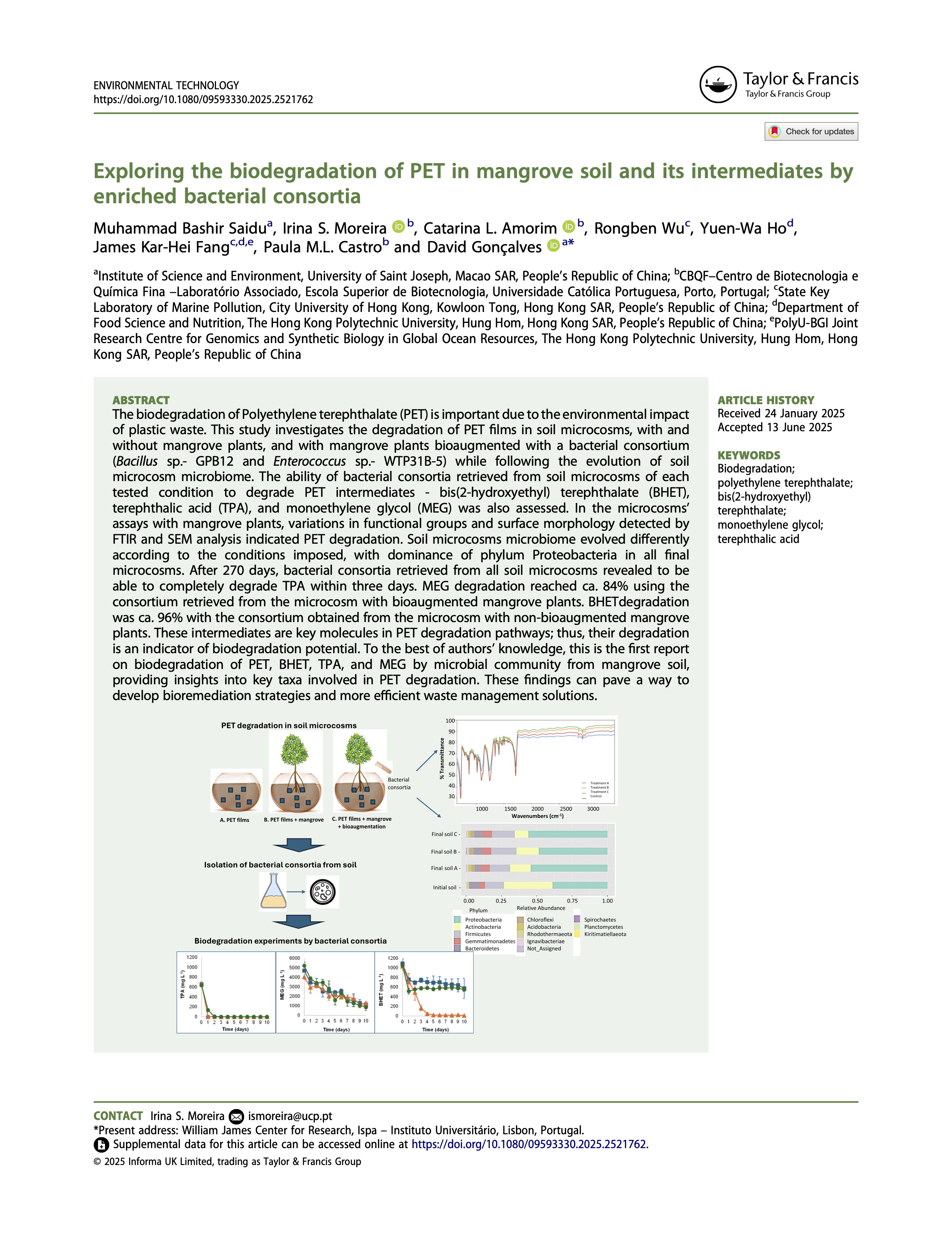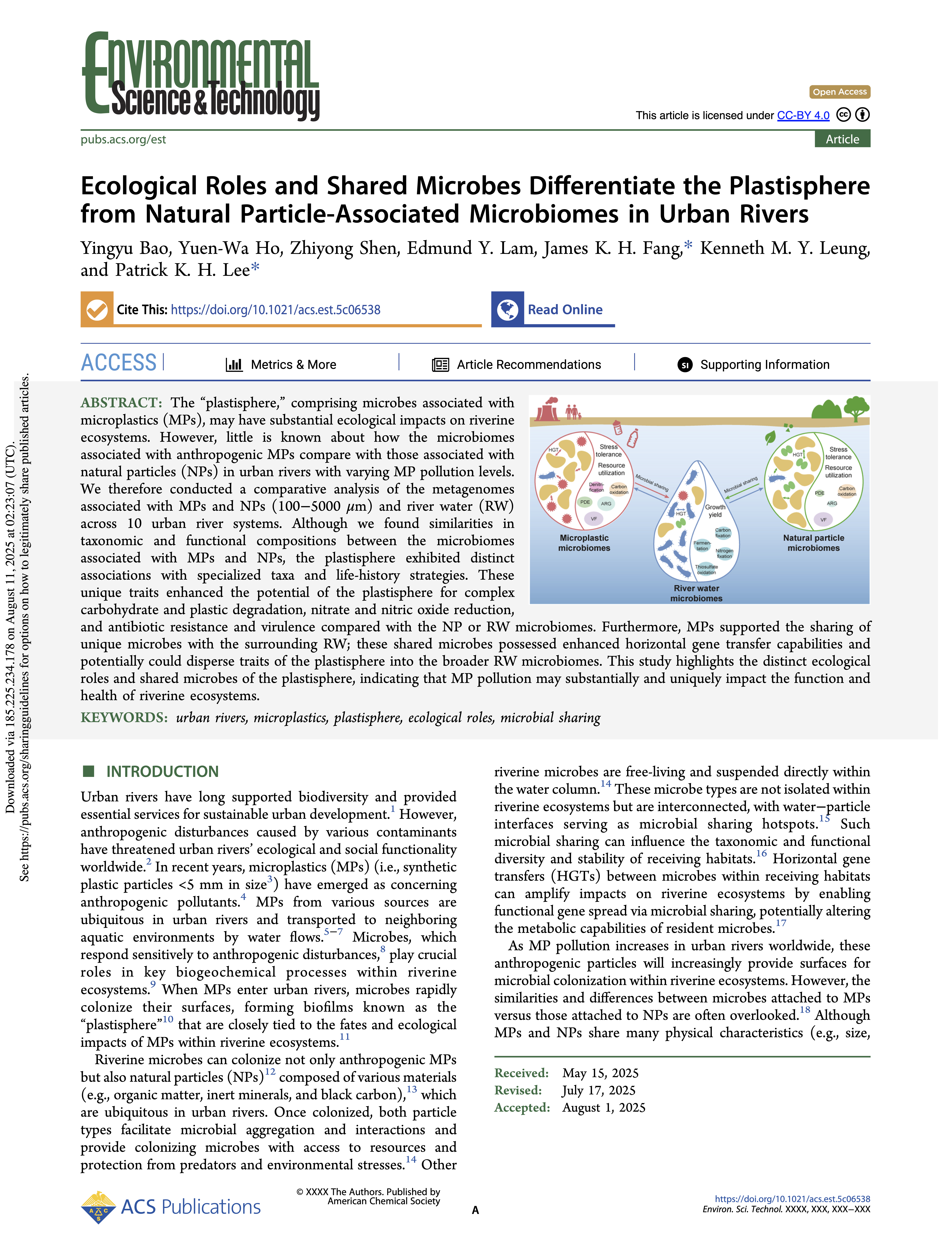Microplastic Distribution & Risk Assessments
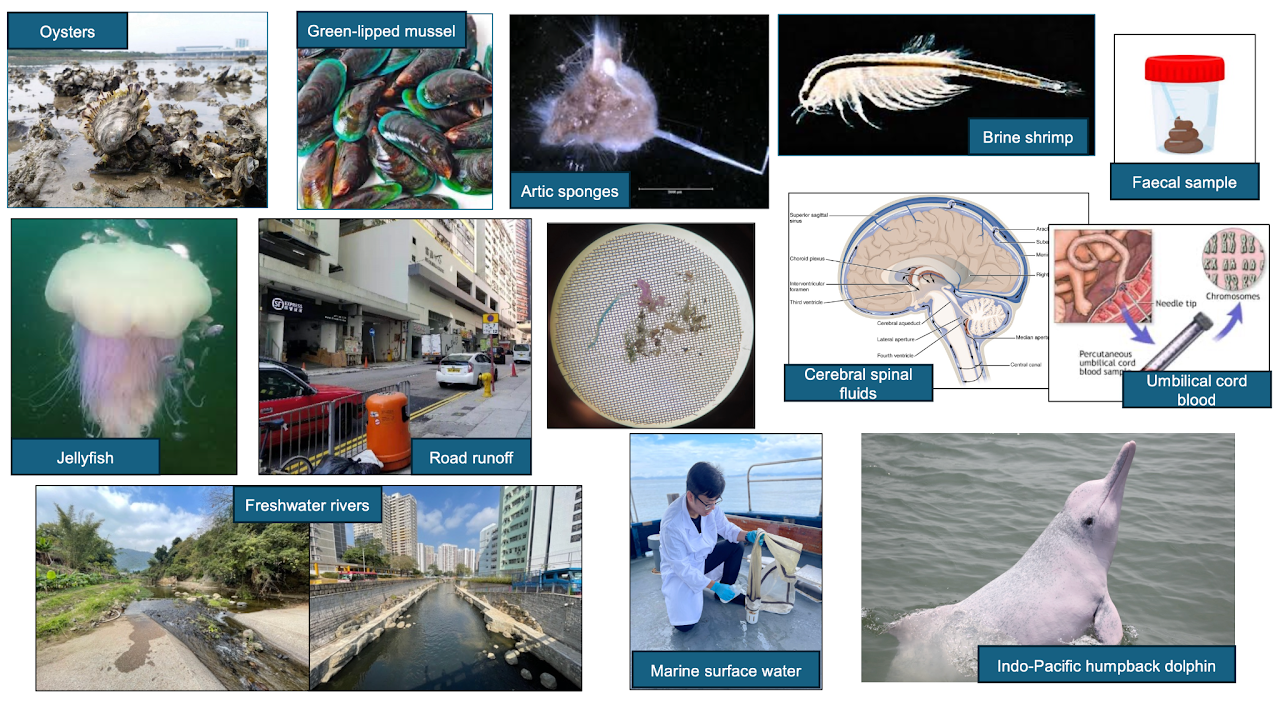
I investigates the pervasive issue of microplastic pollution in aquatic ecosystems, including detection method, characterization, and ecological risk assessment. My work cover diverse systems, from human samples (faecal, urine, sperm samples), where I investigated the potential health risks, to marine organisms such as Indo-Pacific humpback dolphins, green-lipped mussels, and edible oysters, using advanced spectroscopic techniques (e.g., Raman microspectroscopy and optical photothermal infrared O-PTIR) to quantify microplastic ingestion. We also help develop high-throughput polarization holographic imaging for rapid microplastic identification.
My research further examines the environmental dynamics of microplastics, mapping their distribution in remote regions (e.g., the Tibetan Plateau) and in urban waterways, including rivers and stormwater runoff in Hong Kong. These studies underscore the widespread nature of microplastic contamination, its implications for human and ecosystem health, and inform mitigation strategies. Current projects continue to advance detection methodologies and deepen understanding of microplastic pathways and impacts.
Collaborated Projects:
- [Completed] Contract Study: Comprehensive study of microplastics in Hong Kong’s river and streams - Environmental Protection Department, Hong Kong SAR.
- [Completed] Contract Study: China’s Third Marine Pollution Baseline Survey - Environmental Protection Department, Hong Kong SAR.
- Optical and Computational Technologies To Combat Microplastics and Nanoplastics Pollution
- with Prof Edmond Lam’s group, The University of Hong Kong (RIF R7003-21), RGC-HK, 2022-2027
- Ecological roles of the plasticsphere on microplastics in urban rivers of Hong Kong
- with Prof Patrick Lee’s group, The City University of Hong Kong
- [Completed] Nano-bubble assisted flotation of microplastics removal
- with Prof Alicia An’s group, The City University of Hong Kong
- Plasticsphere and toxicity level of microplastics in the coastal marine waters in Hong Kong
- with Prof Ling Jin’s group, The Hong Kong Polytechnic University
Microplastics Ingestion in humpback dolphins
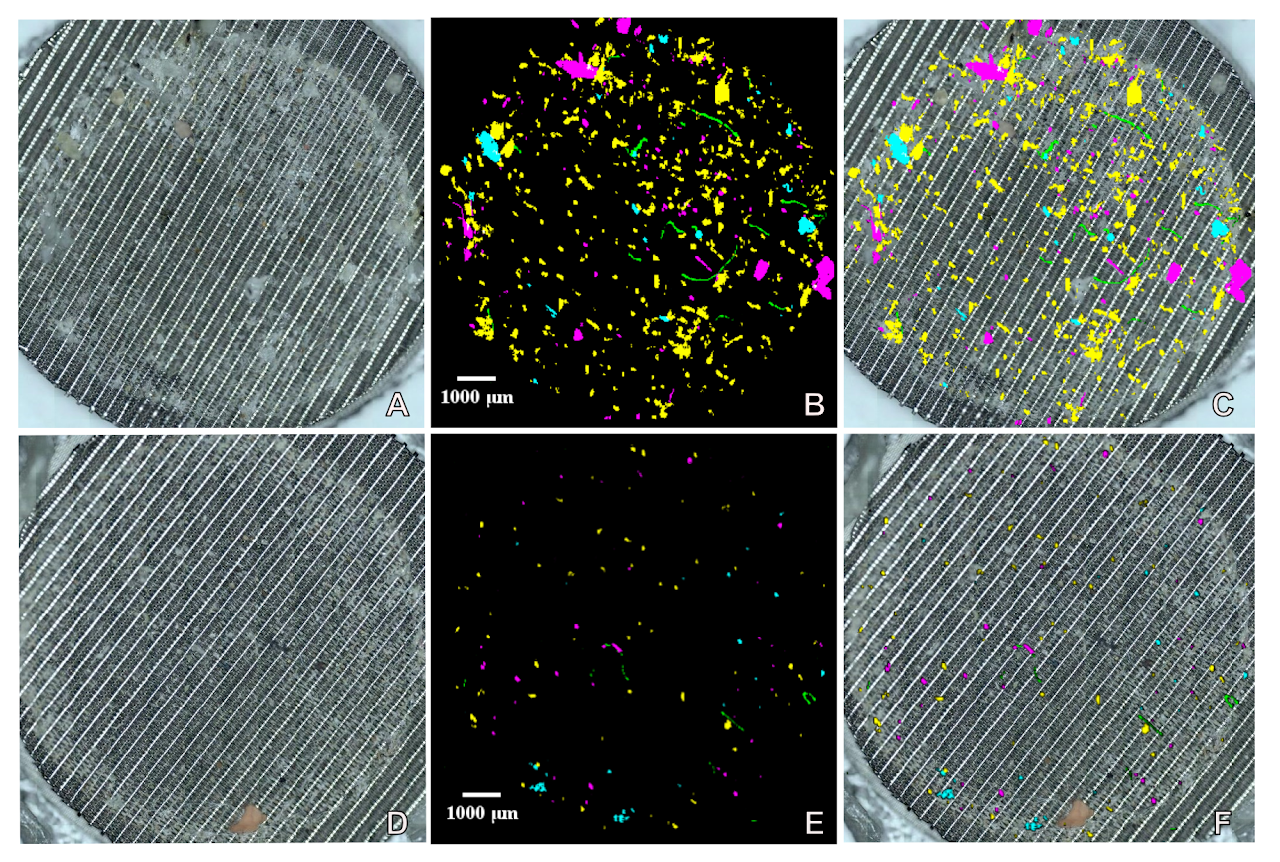
This study investigates the issue of microplastic ingestion in coastal cetaceans, focusing on humpback dolphins stranded in Hong Kong between 2014 and 2023. We aim at understanding the extent of small-sized plastic particle retained in stomach content. Using μ-Raman spectroscopy with automated mapping analysis, we characterized the size and quantity of all microplastics ingestd without subsampling.
Among the various polymers detected, low-density polymers such as polystyrene (PS), polypropylene (PP), and polyethylene (PE) accounted for 92.1% of all identified plastics. We also applied a hierarchical Bayesian model on the size-dependent abundance, which showed that the number of microplastic particles with a size smaller than 113.6μm may have been substantially underestimated. Although significant inter-individual variations were observed, our study’s advanced methodologies and application of Bayesian modeling techniques provide evidence that previous estimates of microplastic ingestion in coastal cetaceans worldwide are likely to have been underestimated.
